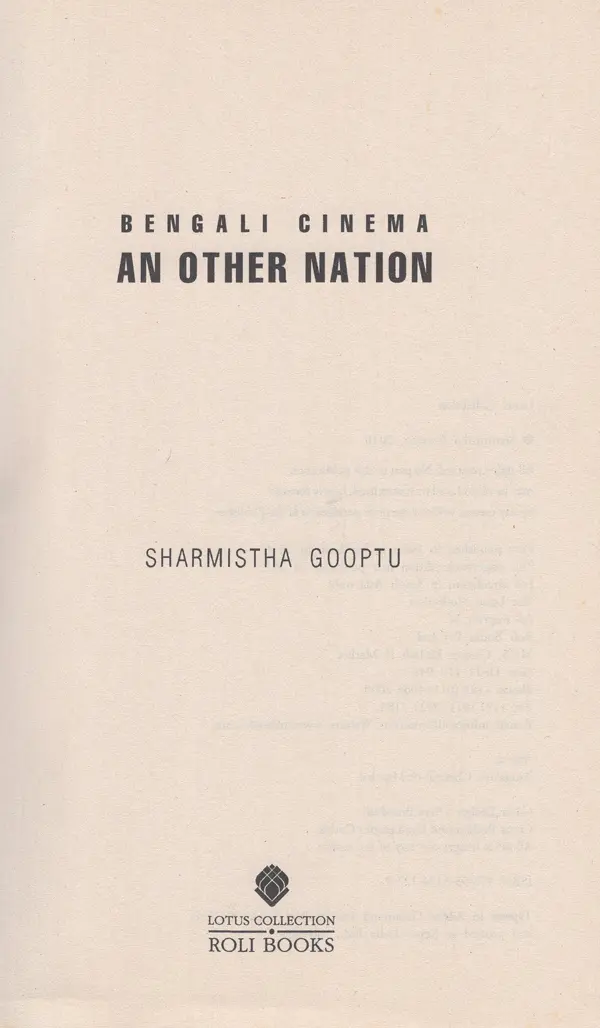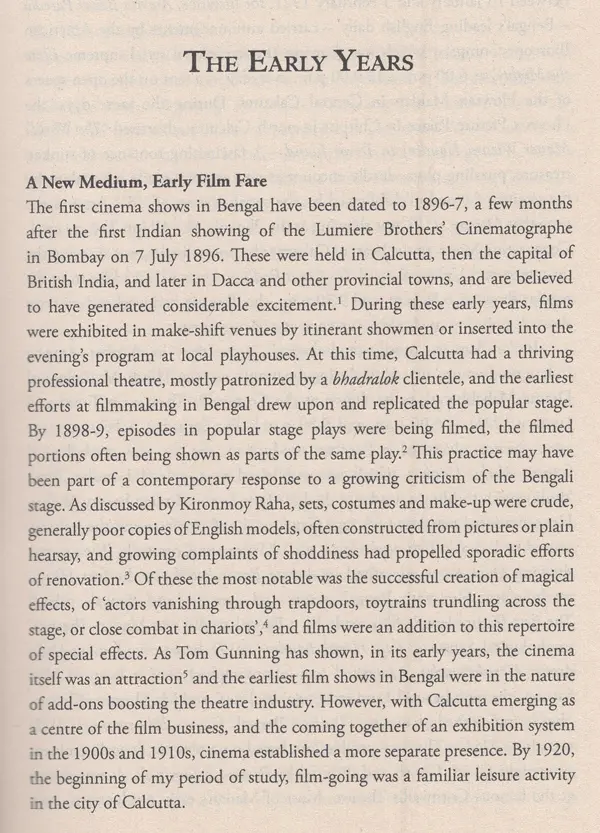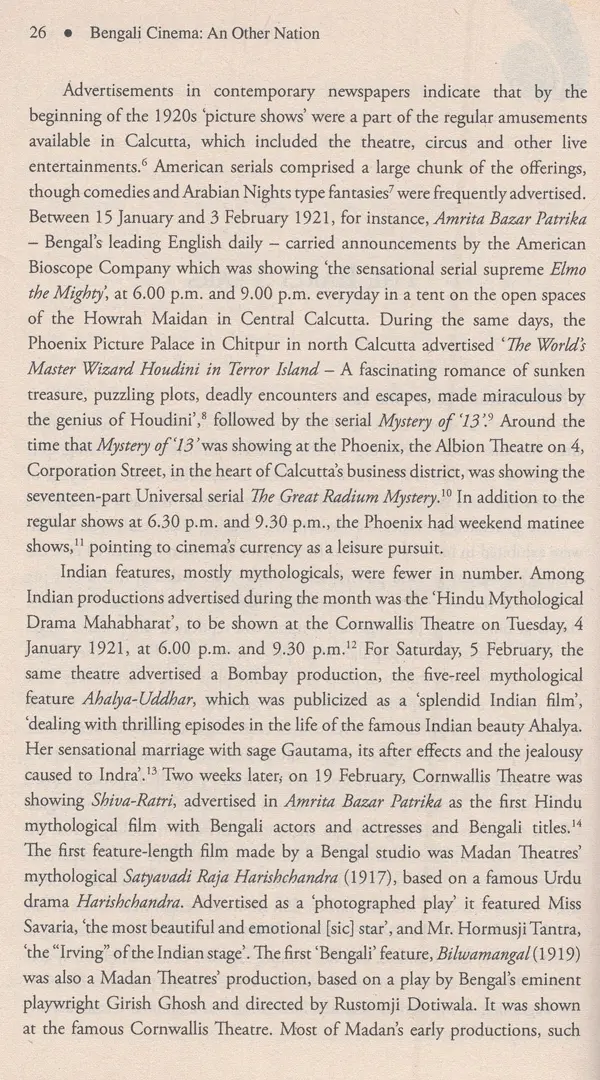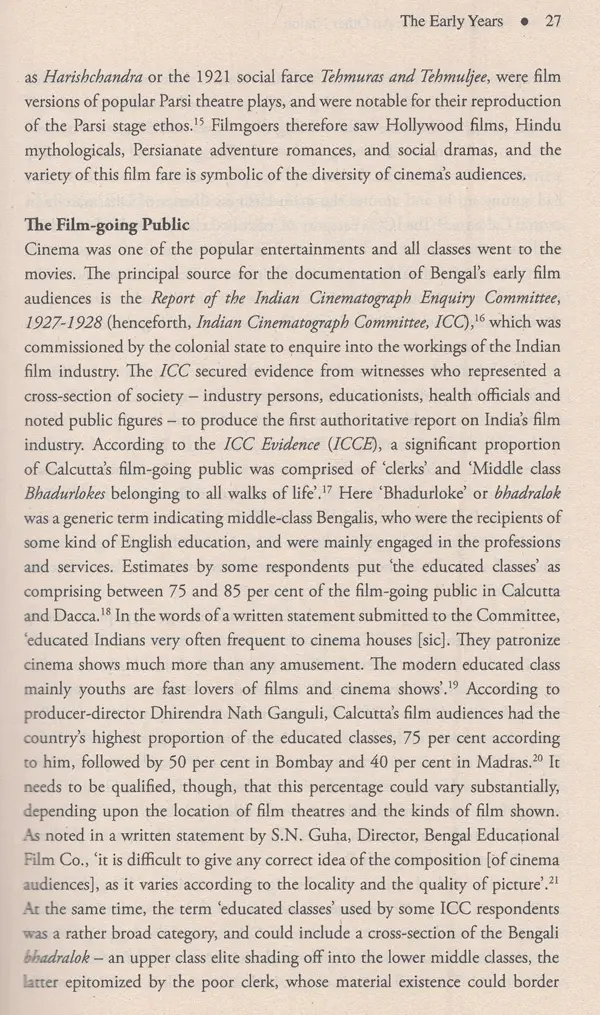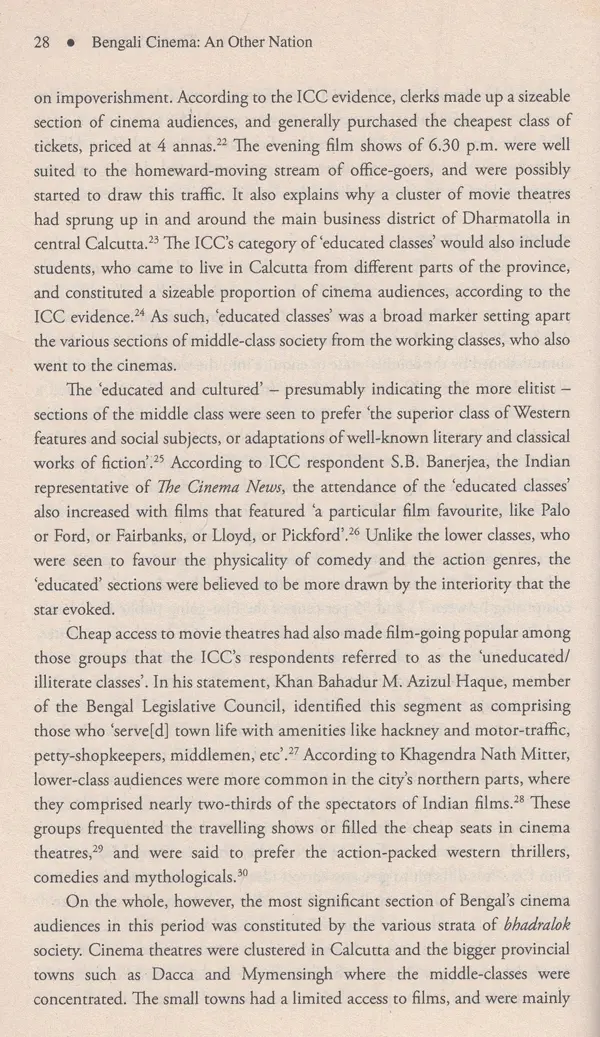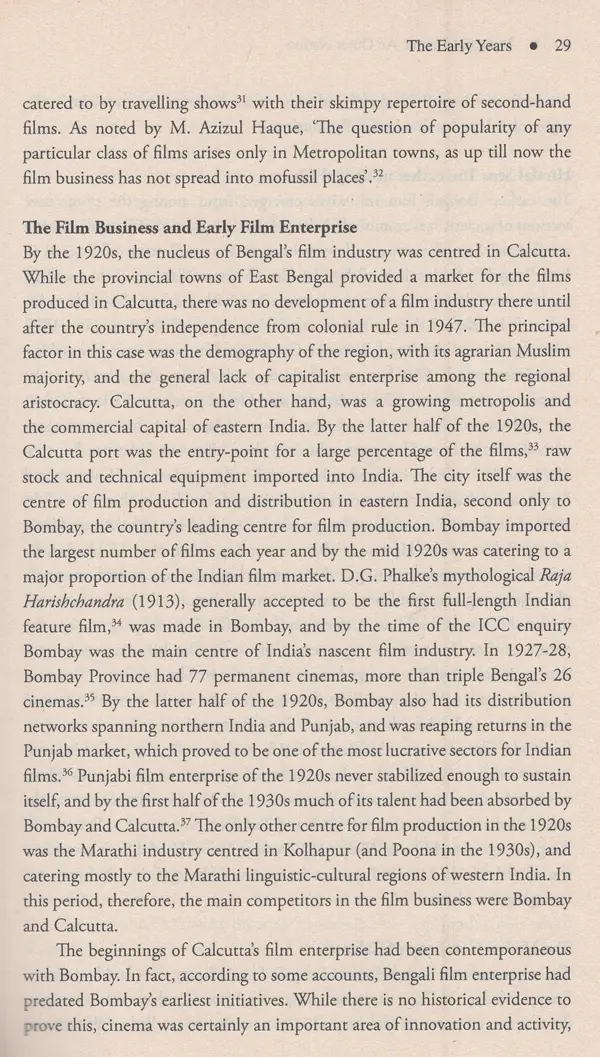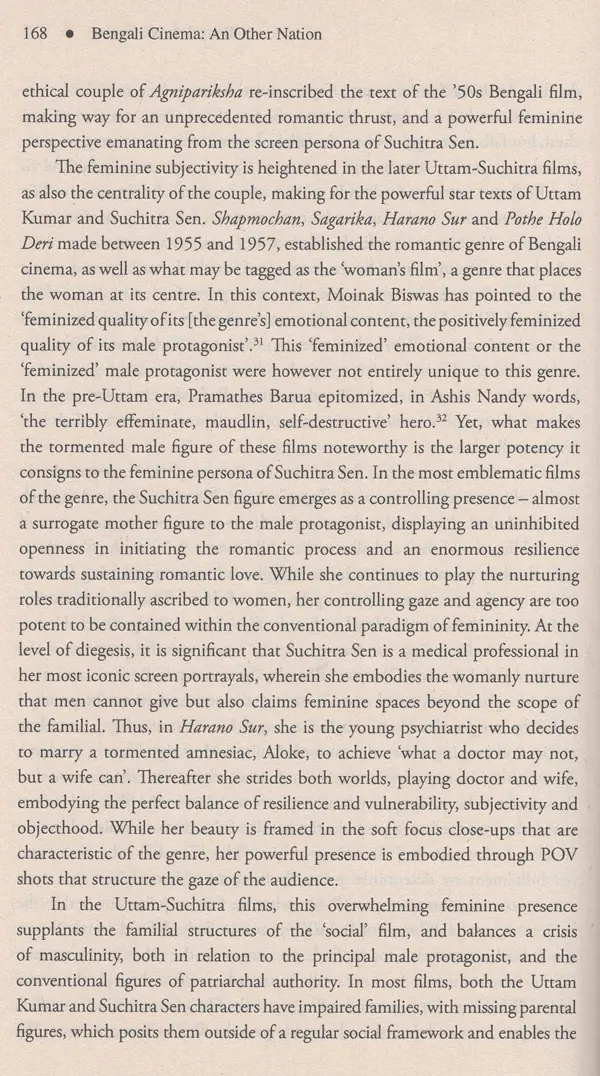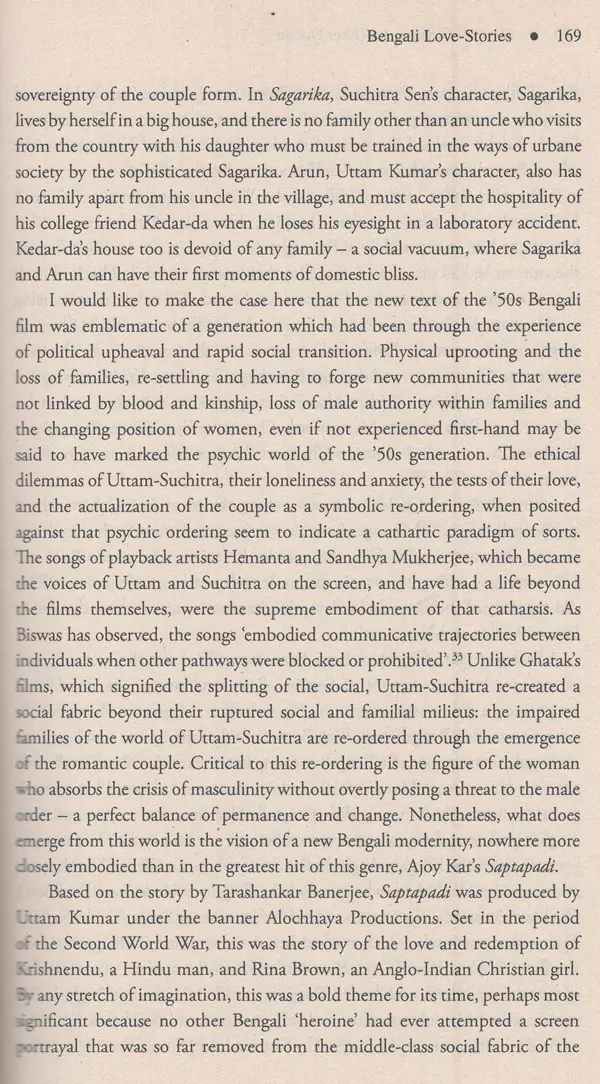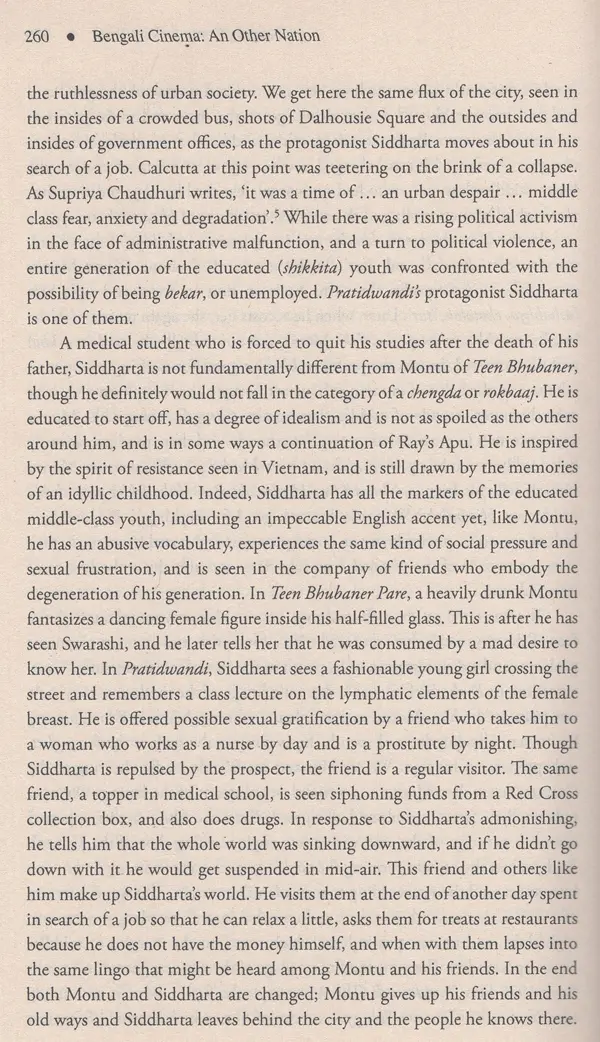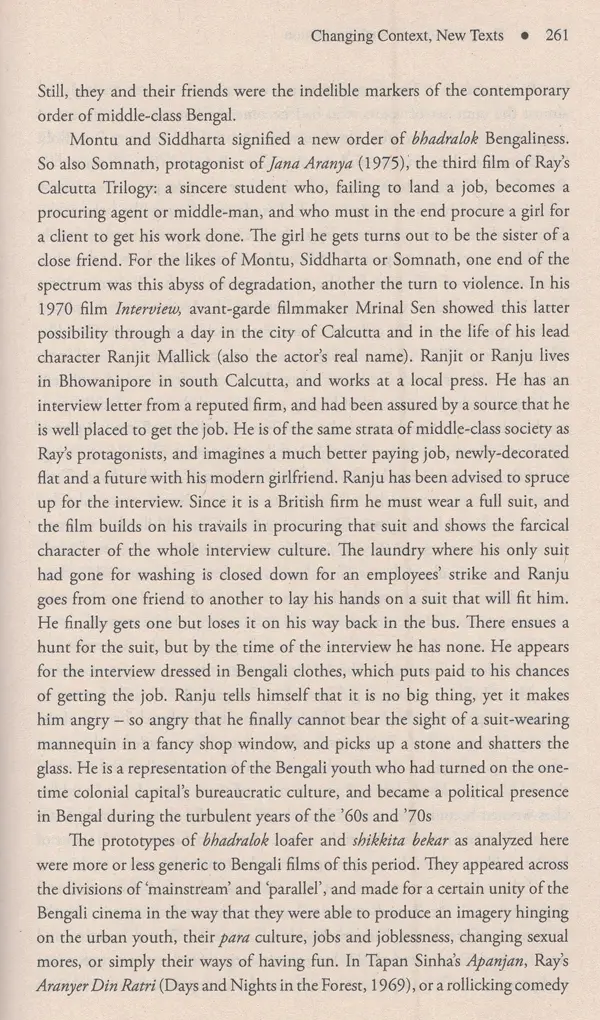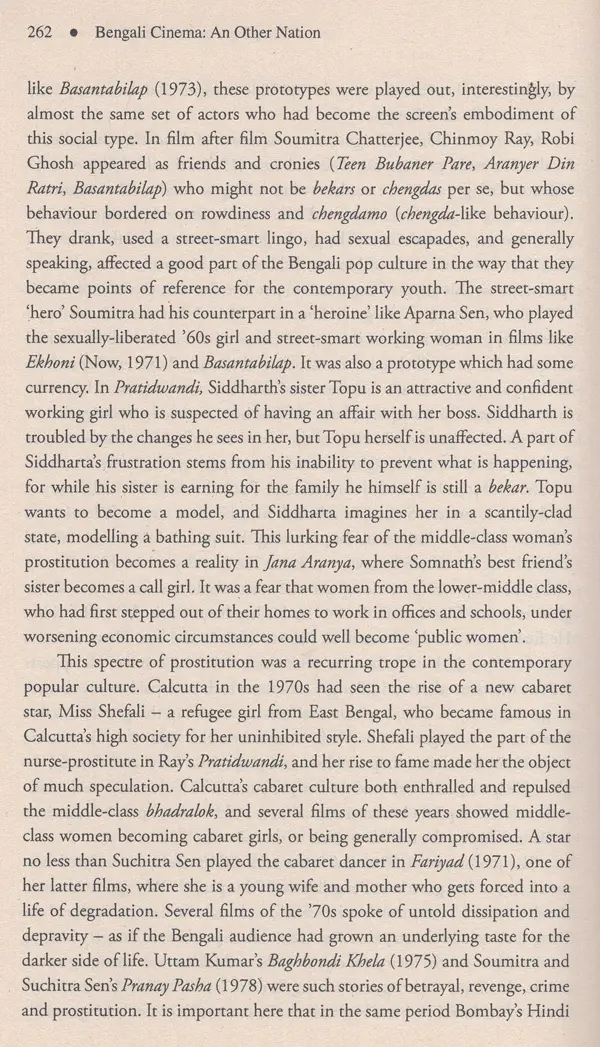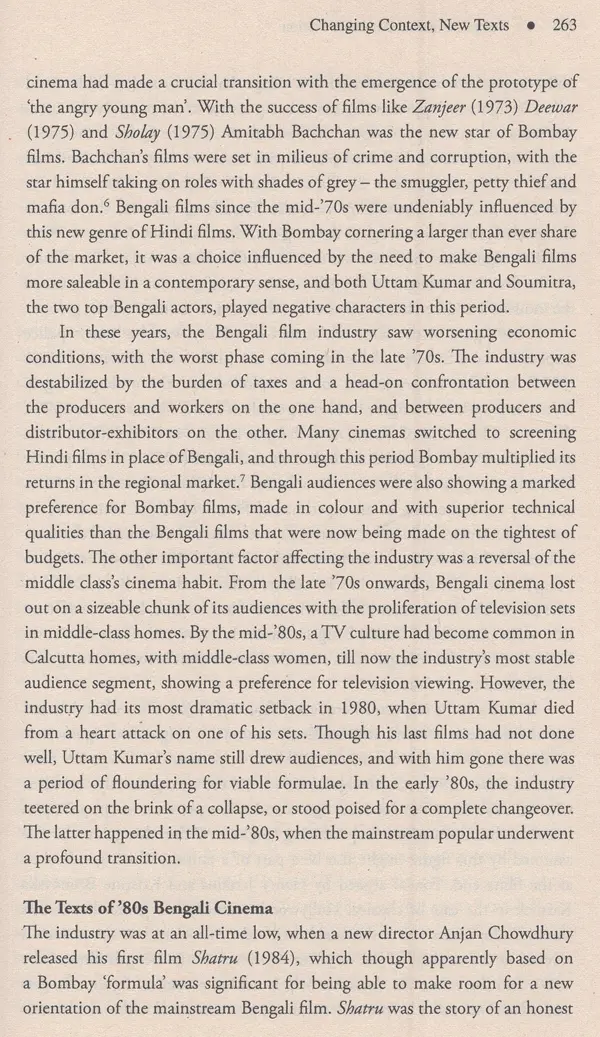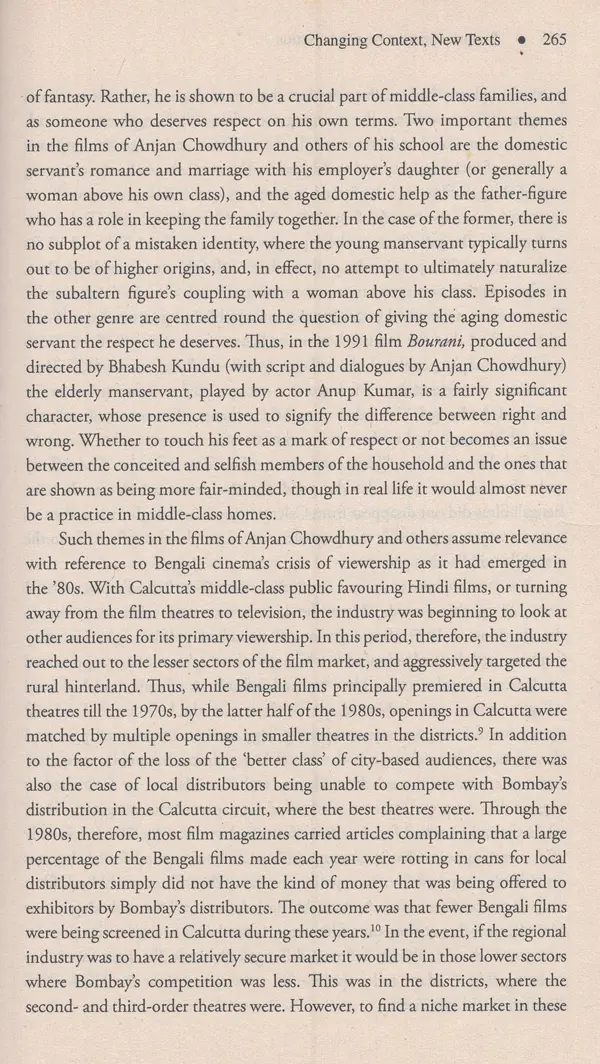
Bengali Cinema: An Other Nation
Book Specification
| Item Code: | UBE956 |
| Author: | Sharmistha Gooptu |
| Publisher: | Roli Books Pvt. Ltd. |
| Language: | English |
| Edition: | 2015 |
| ISBN: | 9789351941279 |
| Pages: | 296 |
| Cover: | PAPERBACK |
| Other Details | 8.50 X 5.50 inch |
| Weight | 280 gm |
Book Description
Sharmistha Gooptu has a Ph.D in History from the University of Chicago. She is a founder and managing trustee of the South Asia Research Foundation, a not-for- profit research body based in India. Gooptu is also the joint editor of the journal South Asian History and Culture (Routledge) and the Routledge South Asian History and Culture book series. She is Adjunct Lecturer at the University of South Australia, Adelaide.
The Imaginary of the Bengali Film A n entry in the Encyclopaedia of Indian Cinema describes 'all-India' film as a Generic term introduced and used most consistently by critic Chidananda Das Gupta to signify mass-produced film formula pioneered by post-WW2 Hindi cinema and duplicated by regional film industries predominantly Tamil, Telegu, Malayalam and Bengali (emphasis mine). This encyclopaedia designated as the most authoritative and comprehensive compendium of Indian cinema by Frontline magazine, carries on its title page photographer Nemai Ghose's classic shooting still of Satyajit Ray - internationally, India's best-known filmmaker. Ray's films embodied the nation in ways that the commercially successful 'all-India' Hindi cinema could not contest. yet, for the most part, Ray had been averse to making films in Hindi, even though it could give him a 'national' audience. The two examples - the encyclopaedia's entry on 'all-India' film, which subsumes Bengali film within the rubric of the 'mass-produced film formula' of Hindi cinema, and Ray on the title page of a tome on Indian Cinema - encapsulate the central paradoxes brought to light by this book. In both cases, the paradox, as it were, arises from the subsumption of Bengali cinema within the body of a 'national' cinema, when. in reality, the Bengali filmic imaginary existed over and above the imaginary of the Indian nation. For a critic like Chidananda Dasgupta, who, with Ray and others, had started the Calcutta Film Society in 1947, and was a leading proponent of Indian art films, Bengali cinema which catered to the box office was easily lumped together with the 'commercial' Hindi cinema. On the other hand, Ray, whose films in India were, for a long time, seen mostly by Bengalis, has barely been appraised as what he primarily was a Bengali filmmaker.
